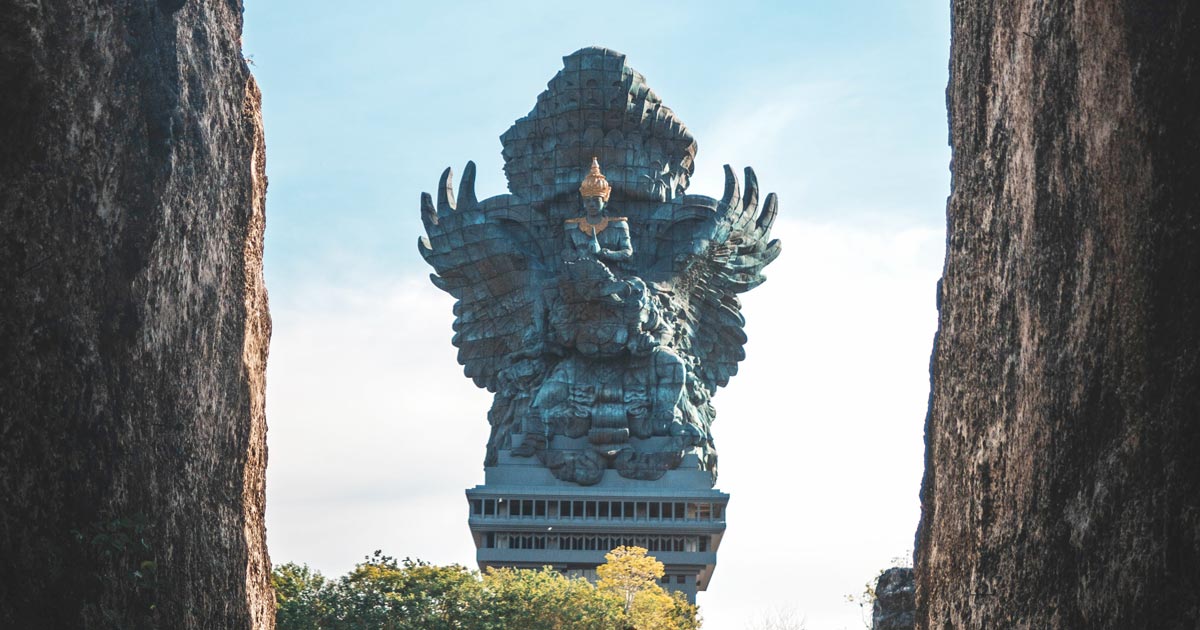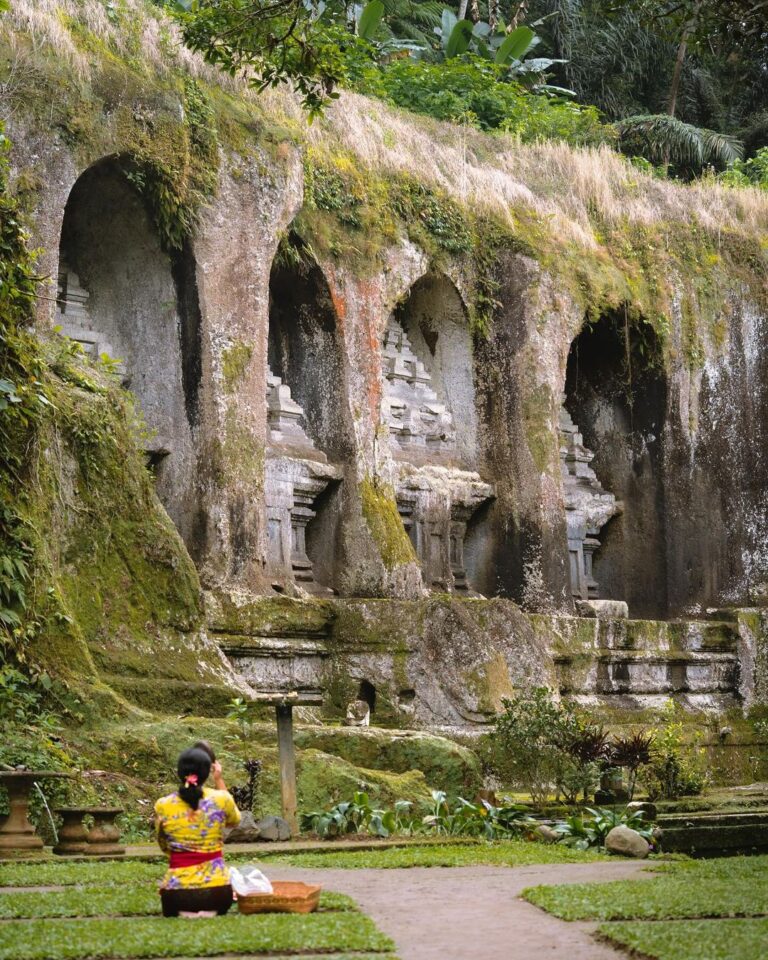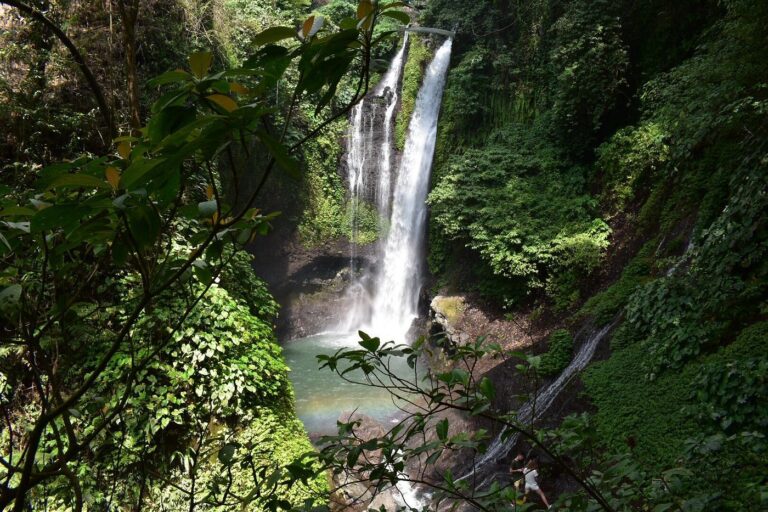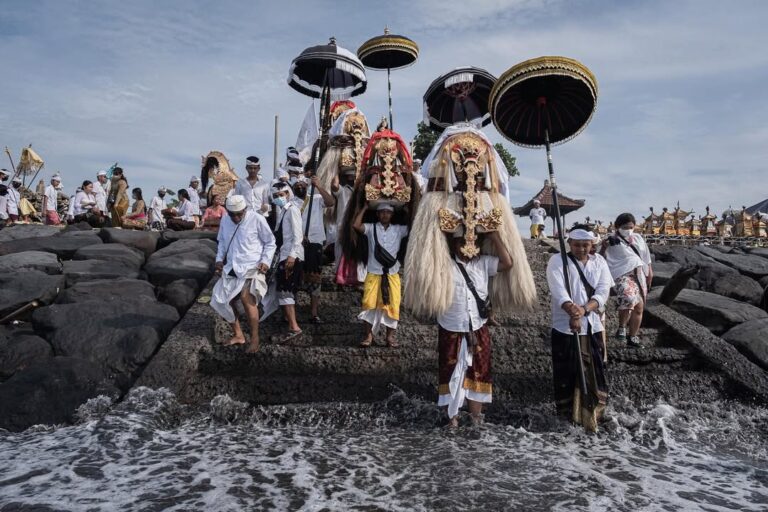Once you land in Bali, you might have noticed a massive statue towering over the Bukit Peninsula in the south part of Bali, Indonesia.
The Garuda Wisnu Kencana (or GWK for short), the second tallest statue in the world at 122 meters tall, ranks shortly behind the Spring Temple Buddha in Hainan, China, which is 153 meters high.
GWK is taller than the Statue of Liberty in New York and Christ the Redeemer of Rio de Janeiro.
Weighing a staggering 4,000 tons, the Garuda Wisnu Kencana (GWK) statue stands as a testament to engineering prowess and artistic vision.
Constructed from copper, brass, and steel, this colossal sculpture dominates a 240-hectare plot of land, overlooking a refreshing waterfall.
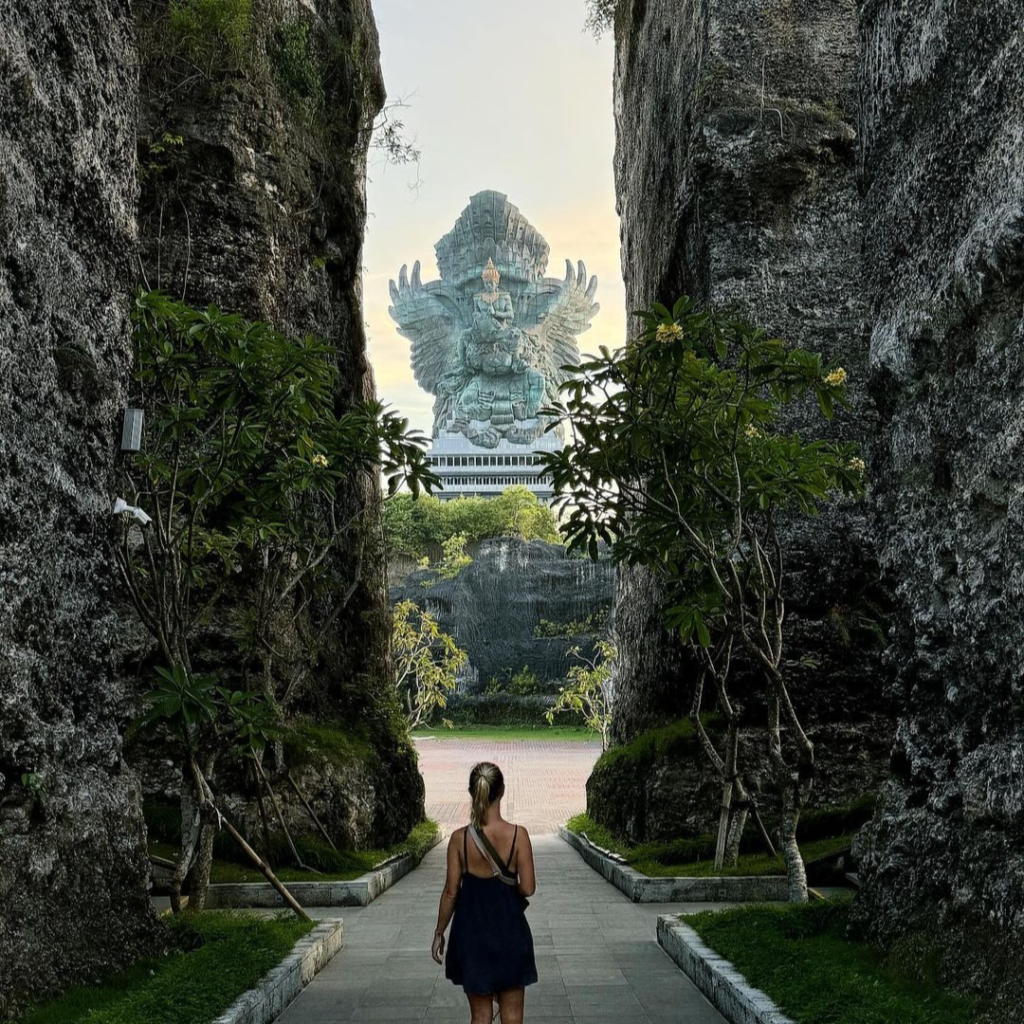
(Photo by : Leni Hu)
A Monumental Undertaking
The total construction time took twenty-eight years and around $100 million. It is the tallest statue of a Hindu deity and the tallest statue in Indonesia.
The vision for GWK was conceived in 1990 by renowned sculptor I Nyoman Nuarta under the then-Tourism Minister of The Republic of Indonesia, Joop Ave.
However, its construction faced numerous challenges, including financial constraints and the 1997 Asian financial crisis. Despite these setbacks, the project persevered.
Construction resumed in 2013 after a sixteen year hiatus and inaugurated by Indonesian President Joko Widodo on 22 September 2018. The total height of the monument, including the 46-meter base pedestal is 122 m (400 ft).
GWK is composed of 754 individual modules, each meticulously crafted at Nuarta’s studio in Bandung before being transported to Bali.
The statue’s design incorporated advanced digital calculations to ensure its structural integrity and resistance to seismic activity.
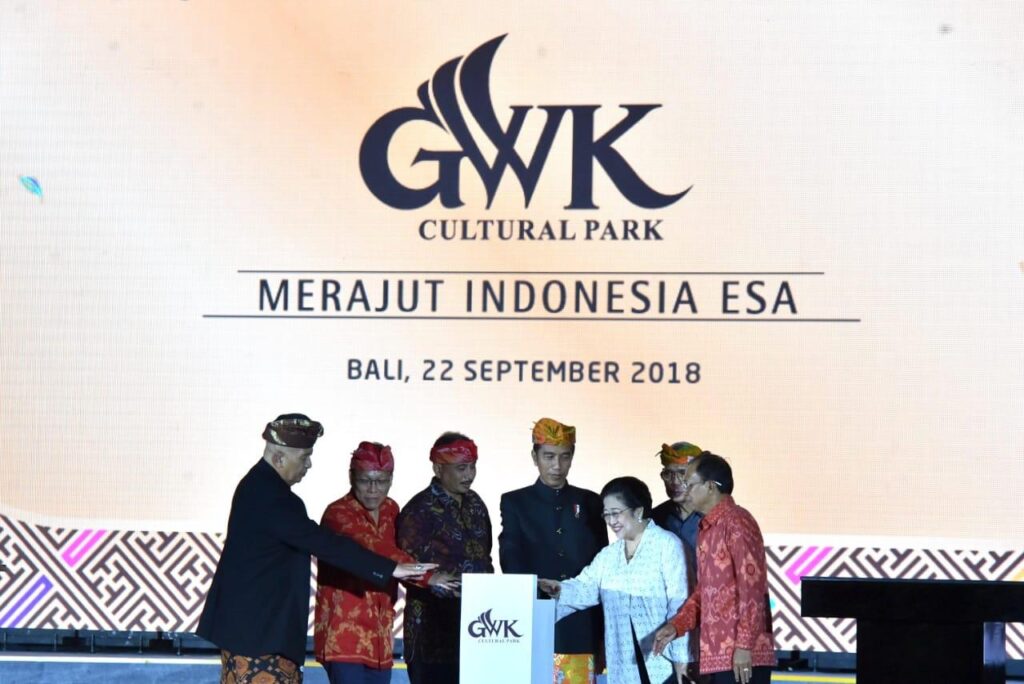
Cultural Significance
GWK is more than just a statue; it’s a powerful representation of Balinese culture and mythology. Lord Vishnu, a Hindu deity associated with preservation and protection, is revered as a symbol of divinity.
Garuda, the mythical bird-like creature, represents strength, courage, and loyalty. Together, This powerful duo embodies the ideal of a just and benevolent ruler.
It also represents the triumph of good over evil along with the harmonious balance of nature.
As a symbol of Bali’s rich cultural heritage. This colossal sculpture is inspired by an event that finds its roots in Hinduism about Garuda’s search for Amrita, the elixir of life.
According to this story, Garuda agreed to be ridden by Vishnu in return for the right to use the elixir to liberate his enslaved mother.
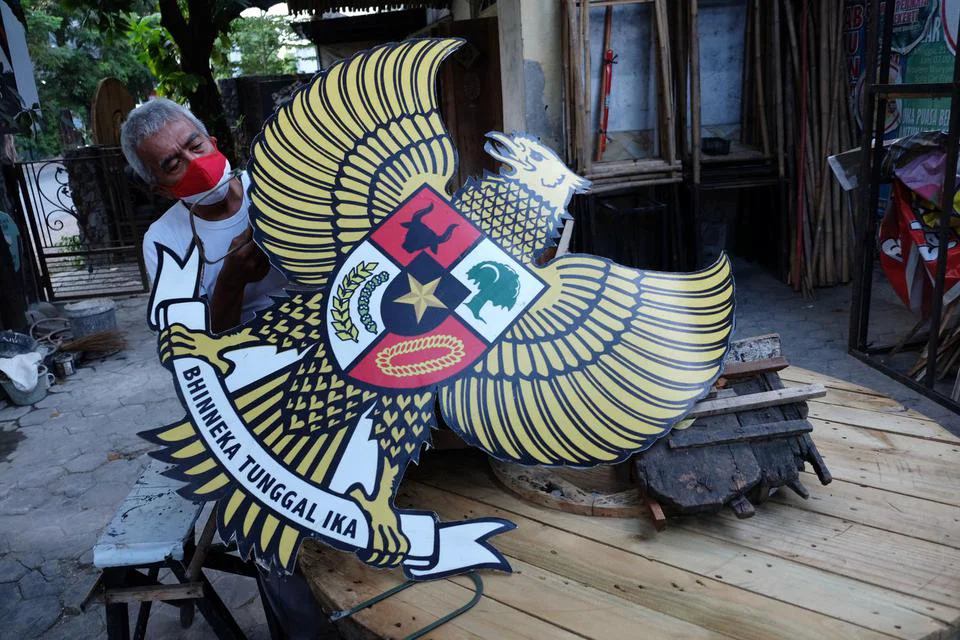
(Photo by : Maulana Surya)
Garuda, the mythical bird-like creature, is also enshrined as Indonesia’s national emblem, known as Garuda Pancasila. This symbol of strength and unity reflects the nation’s commitment to diversity and national identity.
The main part is the Garuda with a heraldic shield on its chest and a scroll gripped by its legs. The shield’s five emblems represent Pancasila, the five principles of Indonesia’s national ideology.
The Garuda claws gripping a white ribbon scroll inscribed with the national motto “Bhinneka Tunggal Ika” written in black text, which can be loosely translated as “Unity in Diversity”.
Garuda Pancasila was designed by Sultan Hamid II from Pontianak, supervised by the first President of Indonesia, Sukarno, and was adopted as the national emblem on 11 February 1950.
Beyond its cultural significance, GWK has become a major tourist attraction in Bali. Visitors can explore the surrounding park, enjoy panoramic views of the Indian Ocean, and witness cultural performances.
The statue’s imposing presence and the park’s amenities make it a must-see destination.
Construction Details
- Height: 122 meters (400 feet)
- Construction Time: 28 years
- Cost: Approximately $100 million
- Design: Conceived by I Nyoman Nuarta

(Photo by Raditya Fadilla)
GWK’s long and arduous construction process reflects the resilience and determination of the Balinese people. Despite facing numerous challenges, they persevered in their vision, ultimately creating a lasting legacy for future generations.
Garuda Wisnu Kencana is more than just a statue; it’s a cultural landmark and a major tourist attraction. Visitors can explore the surrounding park, enjoy panoramic views, and witness the statue’s grandeur.
It is a testament to Bali’s artistic prowess and cultural heritage. Its towering presence and the intricate details of its design make it a truly remarkable landmark.

